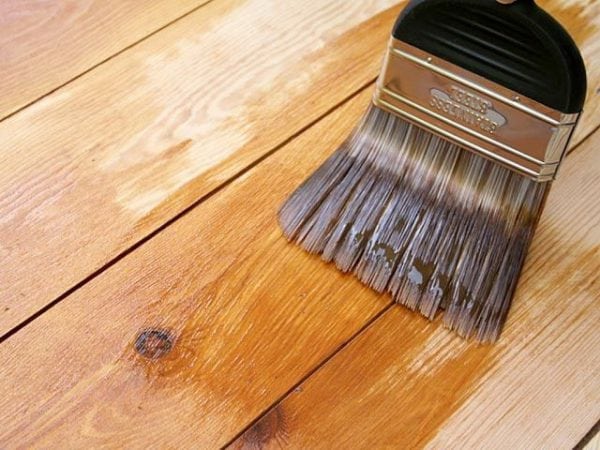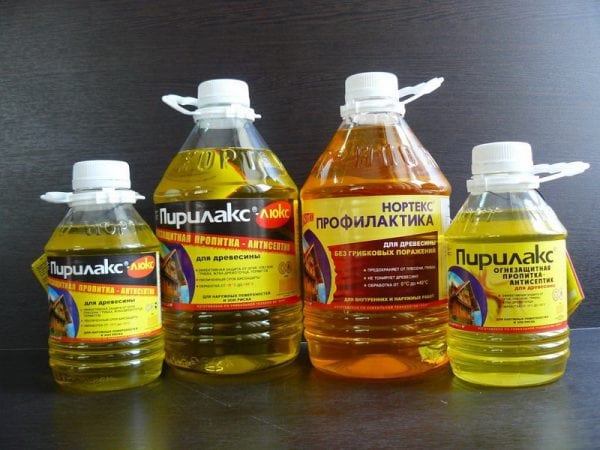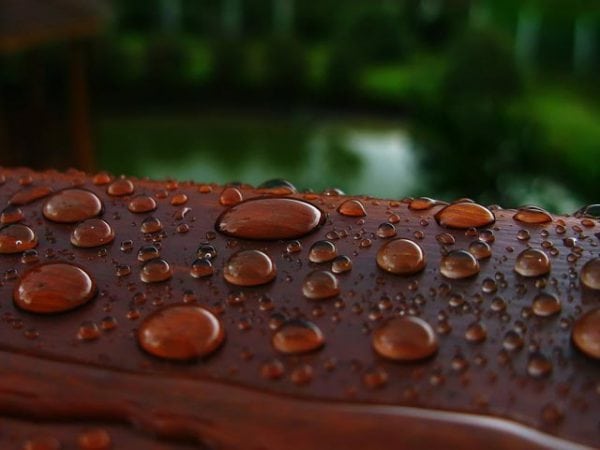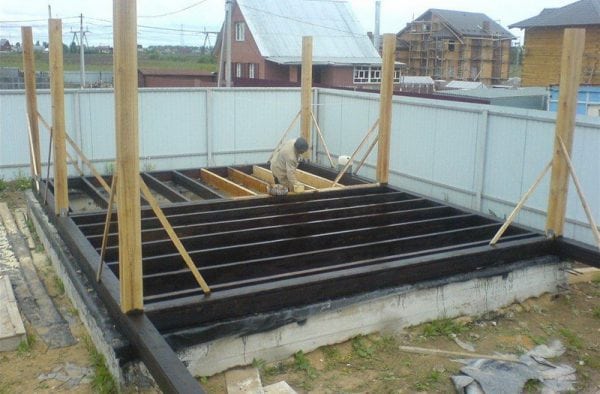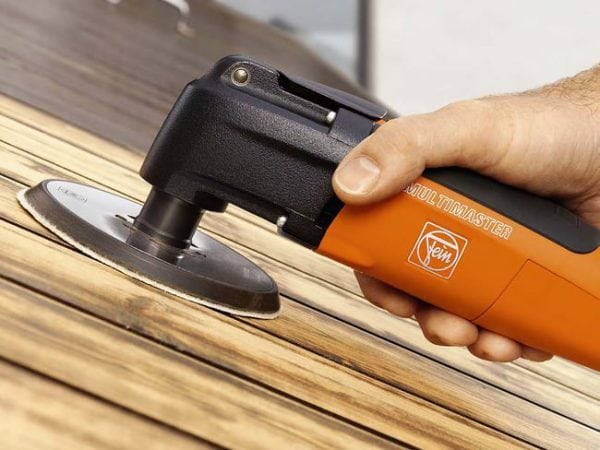Despite the abundance of modern building materials, wood does not lose its popularity. Houses, baths are built from wood, it is used to install various beam ceilings. But wooden surfaces have flaws - they are prone to decay, and various wood-boring insects are planted in them. Properly performed impregnation for wood from moisture and decay allows you to preserve the natural material longer.
- Why does wood begin to rot
- How to protect the wood structure from destruction
- Varieties of impregnating solutions
- Water repellent
- Oil
- Water soluble
- Volatile
- How to choose a suitable impregnation
- Home Remedies
- How to process wood
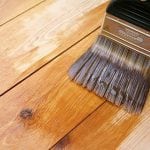
Why does wood begin to rot
Decay destroys the base of the tree, the excreted decay products and traces of the vital activity of microorganisms adversely affect the human body, causing various diseases (most often lungs - due to inhalation of fungi and putrefactive particles entering the air).
But before choosing a composition for wood processing, you need to find out the causes of decay. It could be:
- The destructive effects of atmospheric phenomena. Under the influence of wind and temperature changes, the tree begins to dry out and crack, and the moisture entering the cracks favors the germination of fungal spores. The beginning destructive processes in wood attract insects (mainly wood-boring bugs), and this additional factor contributes to a more rapid destruction of the wood structure. To protect the tree on the street, an antiseptic for outdoor work should be selected that will provide protection from the effects of the environment and scare off woodworkers.
- High humidity and inadequate ventilation. In humid rooms (bath, bath, cellar with a close fit of groundwater), the evaporation of moisture is slowed down, and if there is not enough ventilation, then the water penetrates the wood structure and stays there for a long time. The constant humidity of wood fibers creates favorable conditions for the development of the fungus. A similar situation can arise in the living rooms of the house, when due to insufficient heating in the cold, moisture accumulates in the corners and a whitish coating of mold appears.
- Permanent contact with land or water. In this case, there is direct contact with moisture and various microorganisms, which increases the risk of mold and fungi.
to contents ↑The composition of the antiseptic must be selected taking into account the factors acting on the surface.
How to protect the wood structure from destruction
There are several ways to protect a tree from moisture:
- waterproofing (water penetration to the wood surface is prevented);
- providing adequate ventilation to remove moisture;
- protective impregnation with an antiseptic.
Waterproofing and ventilation can not give a 100% guarantee of protecting the material from fungal infections and rot. Therefore, they are recommended to be used in addition to antiseptic impregnation, which may vary according to the following criteria:
- Place of application. For outdoor work, it is necessary to choose mixtures not only with increased moisture resistance, but also with resistance to temperature extremes.
- Toxicity.Some formulations with high protective qualities have increased toxicity and cannot be used indoors. For outdoor use, toxicity does not matter.
- The nature of the active substance. Allocate organic and inorganic. Organic serve for a longer time, have a high protective ability, but are dangerous to the human body.
- Type of solvent. May be water or have a different base. Aquatic are considered non-toxic. In the construction market in 2016, a wide range of water antiseptics with great protective qualities, suitable for both indoor and outdoor use, is presented.
- The depth of penetration into the wood structure. Some solutions penetrate deeply, filling the pores of wood and preventing the penetration of moisture, while others create a waterproof film on the surface.
- Expiration date. Some formulations provide protection for 3-5 years, others, especially those made with their own hands, are effective for a short time (1-2 years).
Impregnations may contain only one antifungal antiseptic, but in most cases, manufacturers offer comprehensive protection against rot, insects, fungus and fire.
to contents ↑Varieties of impregnating solutions
Conventionally, all protective compositions for wood impregnation can be divided into several groups.
Water repellent
They have high fluidity and penetrate deeply into the structure of the tree. Such antiseptics are recommended for use in places with high humidity (bath, kitchen). Even the accumulation of water on the floor or walls does not affect the protective qualities of the composition. Moisture-repellent preparations are recommended to be used for processing sleepers, wooden poles and other products directly in contact with land or water.
to contents ↑Oil
They have a small penetration depth and form a thin, durable film on the surface. The disadvantage is high toxicity and the fact that oil mixtures can be applied only to dry products.
Water soluble
Eco-friendly, easy to use and dry quickly. Ideal for rooms with moderate humidity. They can process not only wood, but also plywood, chipboard and other wood derivatives.
Volatile
They are made on the basis of varnishes or paints. Such antiseptics penetrate into the structure of the tree shallow, but when dried on the surface they form a thick, durable film. Well suited for outdoor use or for decoration of non-residential premises. Toxic and dry for a long time.
to contents ↑In the paint and varnish products market in 2016, all these varieties are represented by different manufacturers in a wide range. Each master can choose an impregnating agent, taking into account the characteristics of the wood product used.
How to choose a suitable impregnation
When choosing a suitable antiseptic, the following parameters should be considered:
- Effect on fungus and mold. If the impregnating composition is purchased for preventive treatment, then it is enough to take the standard composition. In the case when the “treatment” of a tree already damaged by the fungus is required, it is recommended to choose a more active formula of active substances.
- Impact on wood. Some mixtures not only destroy mold and insects, but also damage the structure of the tree (more often it is a color change).
- Degree of penetration. The deeper the solution penetrates the wood fibers, the more effective the protection will be.
- Resistance to temperature differences. This parameter is important for outdoor applications.
- Validity. The time during which the antiseptic mixture retains its ability to withstand microorganisms.
- The presence of odor. Even a non-toxic composition with a pungent odor is not recommended for use in a residential building - an unpleasant odor will create discomfort.
- Security. In places where people live or pets, only non-toxic compounds should be used.
- Consumption. Usually, depending on the viscosity of the mixture, it ranges from 100 to 400 g / m2.
Protective impregnations can be produced as a standalone solution or as part of primers, varnishes or pastes.
to contents ↑Home Remedies
Despite the fact that manufacturers offer many options for impregnating compounds, some home craftsmen prefer to make protection for the tree from fungus and rot with their own hands. Most often for this purpose they use:
- Copper sulfate. 100 g of dry matter is diluted in 7-10 liters of water and used for outdoor work. The fences and external surfaces of various buildings are treated with vitriol.
- Used oil. The oil drained from the machines and out of date is used for wood in contact with the ground (house crowns, piles and the lower part of the pillars before digging into the ground).
- Hot bitumen or tar. Coating with hot tar provides high protection of the tree from fungi and rot, repels insects well. Tar is used in wooden cellars and in other auxiliary rooms with high humidity.
- Slaked lime. Regular whitewashing allows you to create a calcium hydroxide film on the surface, which serves as an antiseptic and prevents the development of rot.
- Salt and boric acid. 50 g of dry acid and 1 kg of salt are poured with 5 liters of boiling water. The solution is used after cooling.
How to process wood
It does not matter what type of impregnation is used: mortar, primer or a self-made mixture, in order to increase the effectiveness of the product, the wood must first be prepared:
- To clear a surface of pollution and the remains of an old facing (if repeated processing is carried out).
- To wash. Washing increases the depth of soaking. Small surfaces can be washed with a brush and a rag, and for large areas it is recommended to use a car wash (a machine for washing machines in which water is supplied under pressure).
- To dry. Some formulations can be applied to a moist base, but most antiseptics are recommended only after the wood has dried.
If the work is carried out outdoors, it is recommended to choose warm, dry weather.
After preparing the product, it is recommended to dilute the mixture, as indicated by the manufacturer in the instructions. Liquid solutions can be sprayed with a spray gun, and more viscous can be spread evenly over the wood with a roller or brush. When conducting defensive work, professionals advise:
- Wear protective equipment. Impregnations are most toxic at the time of spraying, and it is recommended to work with them in a mask, goggles and gloves.
- Follow the indicated drying time exactly if further decorative finishes are planned. Applying a primer or wallpaper glue on an antiseptic that does not dry out will provoke its “smearing”, and the protection will be uneven.
- During processing even with non-toxic compounds it is recommended to remove pets and children from the house. In addition to the fact that children and animals may be more susceptible to the components of the impregnating preparation, they can simply smear the dry layer and impair the quality of the treatment.
- It is not necessary to apply more layers for increased protection than manufacturers recommend - the protective qualities will not increase, there will only be unnecessary material consumption.
If the processing was carried out in accordance with all the rules, then the antiseptic will reliably protect the wood throughout the entire time specified by the manufacturer in the instructions.
When you want to extend the life of the building, you should not neglect the impregnation from rot and fungi, especially since the solutions are inexpensive. It is better to prevent pests that destroy the wood structure in a timely manner than to spend time and money on restoration.

